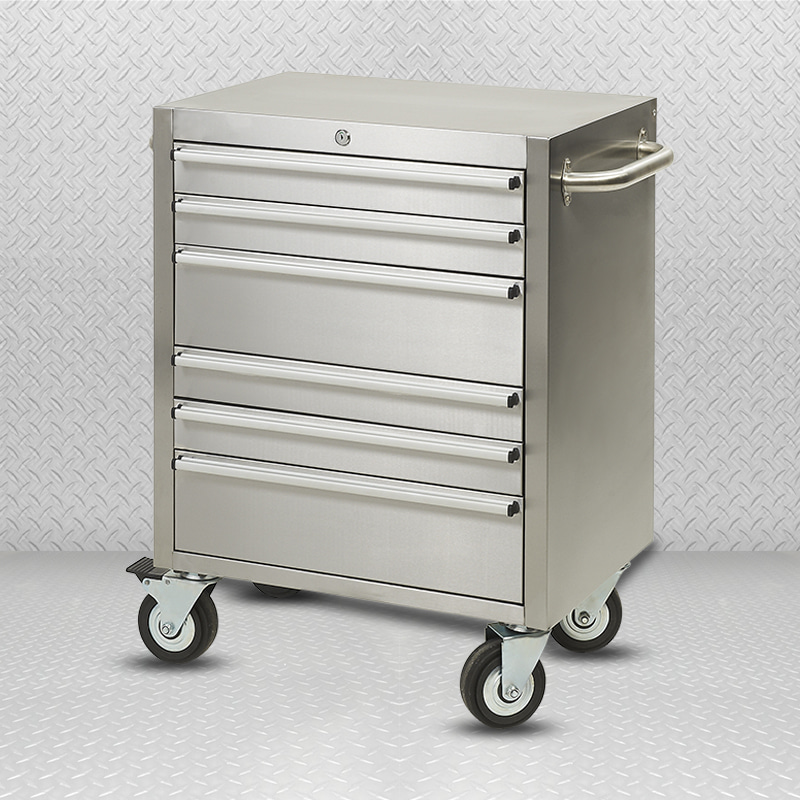Stainless steel tool cabinets are a popular choice for both professional and home workshops due to their durability and aesthetic appeal. However, their production and disposal involve several environmental considerations that are important to understand in the context of sustainable practices.
Resource Extraction
The journey of stainless steel begins with the extraction of raw materials, primarily iron ore, chromium, and nickel. Mining these resources can lead to significant environmental impacts, including habitat destruction, soil erosion, and pollution. Responsible sourcing practices are essential to mitigate these effects, as companies are increasingly held accountable for their environmental footprint during the extraction phase.
Energy Consumption
Manufacturing stainless steel is an energy-intensive process. The smelting and refining of raw materials require substantial energy input, often sourced from fossil fuels, which contributes to greenhouse gas emissions. Transitioning to renewable energy sources in the production process can help reduce this carbon footprint, promoting more sustainable manufacturing practices.
Chemical Use
The production of stainless steel can involve various chemicals, such as acids used for cleaning and etching. If not handled and disposed of correctly, these chemicals can pose risks to the environment, potentially contaminating soil and water sources. Implementing strict regulations and adopting safer alternatives are critical to minimizing these risks.
Longevity and Durability
One of the standout features of stainless steel is its exceptional durability and resistance to corrosion. Products made from stainless steel, including tool cabinets, can last for many years, reducing the need for replacements. This longevity translates to lower resource consumption over time, making stainless steel a more sustainable option compared to less durable materials.

Recyclability
A significant environmental advantage of stainless steel is its high recyclability. Unlike some materials that degrade in quality after recycling, stainless steel can be melted down and repurposed without losing its properties. Recycling stainless steel consumes considerably less energy than producing new steel from raw materials, making it an eco-friendly option for disposal. Consumers are encouraged to recycle old cabinets to minimize waste and promote resource recovery.
Waste Management
Effective waste management practices play a crucial role in reducing the environmental impact associated with the production and disposal of stainless steel cabinets. Companies can implement strategies to minimize waste during manufacturing and promote recycling initiatives for end-of-life products. Responsible disposal methods ensure that materials are not sent to landfills unnecessarily.
Eco-Friendly Alternatives
As awareness of environmental issues grows, there is a push for more sustainable manufacturing methods in the industry. This includes using recycled materials in production and adopting cleaner technologies that minimize emissions and waste. Such innovations not only enhance the sustainability of stainless steel tool cabinets but also appeal to environmentally conscious consumers.
While the production and disposal of stainless steel tool cabinets come with certain environmental considerations, their durability, longevity, and recyclability can help mitigate these impacts. By emphasizing sustainable practices in both manufacturing and disposal, the environmental footprint of these valuable tools can be significantly reduced, making them a responsible choice for those seeking effective storage solutions. As consumers become more informed, the demand for eco-friendly alternatives will likely drive further advancements in the industry.

 ENG
ENG  English
English Deutsch
Deutsch











 +86 (0)512-5297 3238
+86 (0)512-5297 3238 +86 (0)512-5297 3239
+86 (0)512-5297 3239 info@chinagoldenline.com
info@chinagoldenline.com  No.58, Yangguang Avenue, Yushan High-tech Industry Zone, Changshu City, Jiangsu, China.
No.58, Yangguang Avenue, Yushan High-tech Industry Zone, Changshu City, Jiangsu, China.

